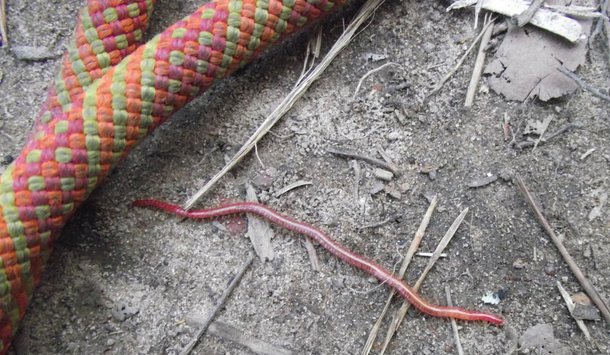The other day when I wrote about going to Red River Gorge I realized while writing the post that it was full of jargon and I was naming off a bunch of gear. Which is why today I though I would elaborate on all of the things I mentioned so it all comes into perspective. In the sport of rock climbing there is a couple different ways of climbing. To name a few there is trad, boulder, and what I did was sport climbing.
In sport climbing the wall has been drilled into and bolted about every ten feet which allows you to clip the to rope into quickdraws. Falling is not necessarily a big problem because the max you will fall is about 20 feet. Honestly, I love falling and the rope catching me, the adrenalin surges every time. Once you reach the top you generally are lowered down by your belay-or, unless you are cleaning the route. Cleaning the route means that after the climber climbs the route they remove all the gear so that when they lower them self down to the ground none of the gear is left on the route. Now if the climber didn’t lead the route, start with the rope and all the quickdraws at the bottom, they can climbing what is called “top-roping” which is a lot safer because if they were to fall all they would do is swing out, actually calling it falling is sort of a oxymoron.


To bring the degree of difficulty of rock climbing grades into perspective, hiking trails are rated one through four. And once you reach past four it cannot really be called hiking any more which is why there is always a number five in a sport route grade. Now the number five is divided up from 1 to 15 where 4-6 is the absolute easiest and climbing a 15 is only within the capability of a hand full of people throughout the entire world. Another level of division exists to explain how difficult the route is, the four letters A, B, C, and D. So there could be a route label 5.11a which would be the easiest 5.11 anyone should encounter and 5.11d being the most difficult 5.11. The last thing to note is that some routes have a minus or plus after them to indicate again if it is easier or harder.
As for gear, there really isn’t much, but a few things can be tricky or glossed over. The bare necessities are a harness, rope, belay device with locking carabiner, and enough quick draws to finish the route. While the harness needs no explaining, quickdraws are two spring-loaded clipping devices connected to each other that allow you to anchor the rope to the wall and still pull rope through it. The belay device is straight forward in that the partner feeds the rope through it as the climber climbs and when the climber fall it locks up but with so many designs and techniques out there they quickly become complicated. The rope to is hiding a few secrets too in its design. Climbing rope is “dynamic” which means when you fall it stretches before it catches the climber which reduces the stress put on the quickdraws and bolts in the wall.




Other gear I never paid attention to until I climbed my first sport route where rope bags, clipping pole, gloves, and food. The rope bags have a tarp hidden inside which are designed to help keep the rope tangle free, dry, and most importantly clean. A dirty rope is capable of reducing the strength of a rope severely and making it unsafe. A clipping pole helps to clip the first quickdraw with the rope into the first bolt without ever leaving the ground, because otherwise there would be nothing to catch the climber. I recommend gloves not because my hands hurt or get tired but because how dirty a rope can get your hands. Finally is food, I’m not sure about everyone else but rest assured when I get done with climbing I crave massive amounts of protein, water, and fruit.
Hopefully I brought everything into perspective well enough, otherwise please comment bellow.
Climbing Gear & Jargon

Modified:



Leave a Reply